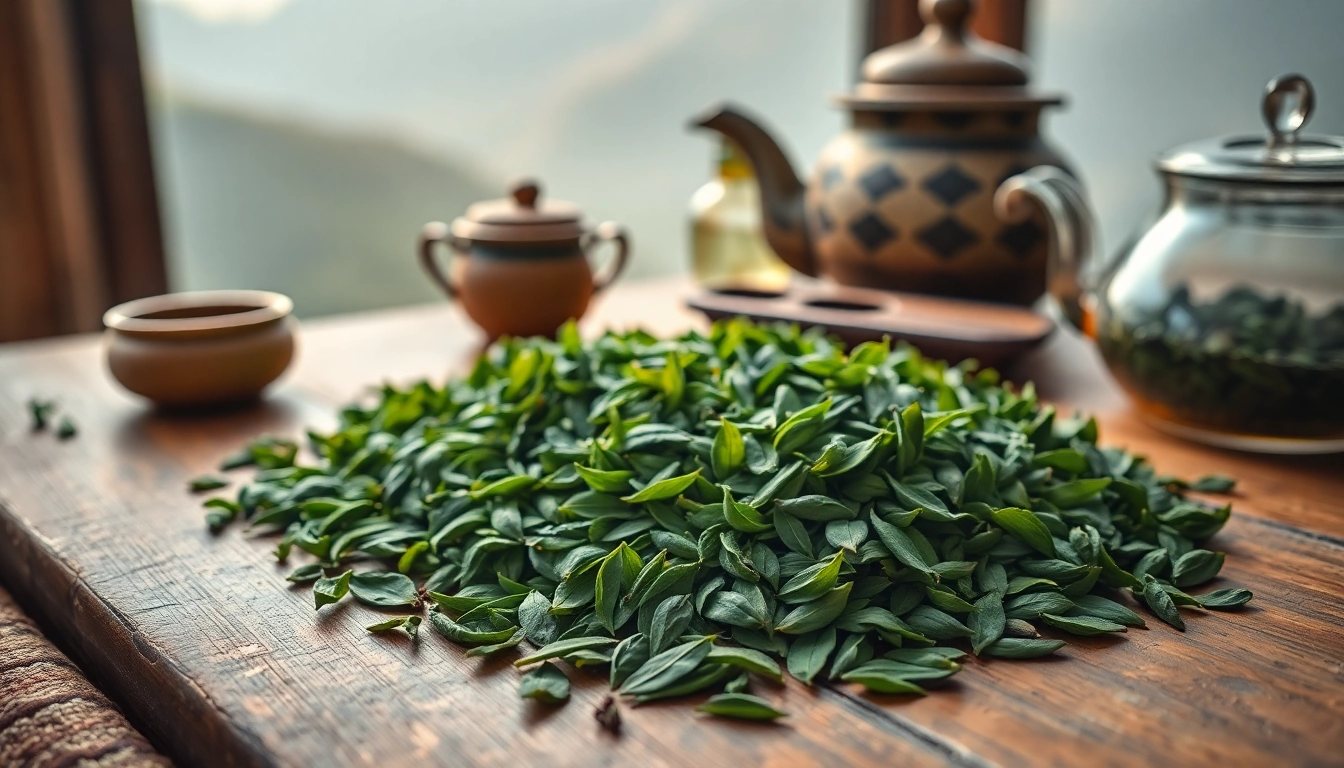
Introduction to Nepal Tea
Nepal tea is gaining global recognition for its unique flavors, high-quality production, and rich history. Nestled in the heart of the Himalayas, Nepal boasts a diverse landscape that provides ideal conditions for tea cultivation. It stands apart not just for its distinctive taste but also for the artisanal methods employed in its production. The high-altitude farms contribute to the vibrant character and unparalleled freshness of the tea, making it a favorite among connoisseurs and casual drinkers alike. In this comprehensive guide, we will delve deep into the various aspects that make Nepal tea an exceptional choice for tea lovers around the world.
What Makes Nepal Tea Unique?
One of the defining characteristics of Nepal tea is its cultivation method. The tea plants thrive in the elevated terrains of the Himalayas, where a unique combination of altitude, climate, and soil results in flavors that are often described as more delicate and aromatic compared to those from other famous tea-producing regions like Darjeeling. Furthermore, the distinct processing methods—ranging from traditional to organic practices—enhance the flavor profiles, leading to teas that can be fruity, floral, or even earthy. These qualities create a sensory experience that is rich and fulfilling.
A Brief History of Nepal Tea
The history of tea in Nepal is closely intertwined with its culture and geography. It began in the 19th century when the British introduced tea plantation practices to the region, particularly in Ilam, a district renowned for its tea gardens. Initially, the tea produced was primarily for local consumption and gradually evolved as the market expanded internationally. Today, Nepal continues to honor its rich heritage while embracing modern agricultural techniques and organic farming, ensuring that it maintains its place in the global tea industry.
Types of Tea Grown in Nepal
Nepal produces several distinct types of tea, largely clustered into two categories: Orthodox and CTC (Crush, Tear, Curl). Orthodox teas are hand-processed and renowned for their complex flavors and delicate aromas, while CTC teas, commonly used for mass production, provide a stronger, bolder flavor. Within these categories, you will find a variety of black, green, white, and specialty teas, such as oolong and herbal blends. Each type offers its own unique attributes, appealing to diverse palettes and preferences.
The Cultivation Process of Nepal Tea
The journey of Nepal tea from the plantation to our teacups is fascinating and showcases the dedication of farmers and tea enthusiasts alike. Understanding the cultivation process reveals why Nepal tea stands out in terms of quality and flavor.
High-Altitude Farming Techniques
Tea plants thrive at altitudes ranging from 1,200 to 2,200 meters above sea level in Nepal. This high-altitude environment has a significant impact on the tea’s growth and characteristics. The cooler temperatures slow down the growth of tea leaves, allowing more time for flavor development, and the high UV exposure intensifies the tea’s essential oils and aromatic compounds. Farmers employ careful techniques to nurture the delicate leaves, often hand-picking only the finest buds to ensure quality. The rich soil, combined with these specific farming practices, contributes to the inherently vibrant flavors found in Nepal tea.
Organic Farming Practices
Organic farming has gained momentum in Nepal, with many tea estates adopting sustainable practices. This includes the use of organic fertilizers, natural pest control methods, and eco-friendly harvesting techniques. By avoiding synthetic chemicals, these practices not only protect the environment but also enhance the quality of the tea. Additionally, the emphasis on organic farming resonates with health-conscious consumers looking for natural and wholesome options.
Harvesting and Processing Methods
The harvesting process is pivotal in determining the flavor and quality of Nepal tea. Generally, the first flush harvest occurs in early spring, yielding the most tender and flavorful leaves. After harvesting, the tea leaves are processed through various methods—oxidation, steaming, and drying—culminating in the distinct flavors of the finished product. For instance, green teas undergo minimal oxidation, preserving their vibrant color and fresh taste, while black teas are fully oxidized, resulting in a bolder flavor profile. The meticulous care during processing maintains the integrity of the tea leaves, ensuring an authentic experience for consumers.
The Distinctive Flavors of Nepal Tea
The flavor profiles of Nepal tea are as varied as the region itself. With different varieties of tea cultivated, each brings something unique to the table. This diversity broadens the appeal of Nepal tea, attracting tea lovers around the globe.
Flavor Profiles of Different Varieties
Different types of Nepal tea exhibit a wide range of flavors and aromas. For example, the famous black teas from Nepal often have a rich, malty flavor with hints of cocoa or fruit, while green teas tend to be more delicate with floral notes. White teas cultivated from young buds offer a soft, mellow taste with a subtle sweetness. Additionally, herbal blends infused with local flowers and spices can provide unique, refreshing flavors. The careful balance of these flavor profiles speaks to the skill of the farmers and tea makers in Nepal.
Comparing Nepal Tea with Other Teas
When comparing Nepal tea to teas from other regions, the distinctions become strikingly apparent. For instance, while Darjeeling tea is famous for its muscatel notes, Nepal tea often presents a cleaner, more brisk flavor profile with fruity and floral undertones. The aromatic complexity of Nepal teas often rivals those produced in regions like Assam or Uva, making Nepal a hidden gem in the world of tea. Consumers who have not yet explored these teas may find a delightful surprise when they taste the nuanced characteristics that set them apart.
Flavor Pairings for Nepal Tea
Pairing Nepal tea with food can enhance the experience of both the drink and the dish. Black tea, for example, pairs beautifully with chocolate desserts or savory dishes, complementing rich flavors. Green tea, on the other hand, goes well with lighter fare such as salads, seafood, or fruit. The refreshing nature of herbal teas makes them ideal companions to spicy or rich dishes, as they can cleanse the palate. Exploring these pairings allows for a richer tea-drinking experience and encourages experimentation in the kitchen.
Health Benefits of Drinking Nepal Tea
Beyond its delightful flavors, Nepal tea is also packed with health benefits that make it a worthy addition to anyone’s diet. The myriad health properties of tea have been studied extensively, and Nepal tea is no exception.
A Natural Source of Antioxidants
Nepal tea is rich in antioxidants, which play a pivotal role in combating free radicals in the body. These antioxidants, particularly polyphenols, have been linked to reducing inflammation, supporting heart health, and improving overall wellness. Regular consumption of quality teas can contribute to a healthier lifestyle and may lower the risk of chronic diseases.
Promoting Mental Clarity and Well-Being
Tea is often associated with mental clarity and relaxation. The presence of L-theanine, an amino acid found in tea, promotes a calm yet alert state of mind. This makes Nepal tea, particularly green and herbal varieties, an excellent choice for those seeking a soothing drink that aids concentration. The traditional cultural practice of tea drinking among Nepalese people emphasizes mindfulness, allowing for deeper relaxation and reflection.
Traditional Uses in Nepalese Culture
In Nepal, tea is more than just a beverage; it is a significant part of cultural rituals and social gatherings. Traditionally, it has played a role in hospitality, symbolizing warmth and connection among people. Certain herbal teas are even used in folk medicine to treat various ailments, illustrating the deep-rooted association of tea within the community. As these practices blend with modern health insights, Nepal tea remains relevant both culturally and scientifically.
How to Brew the Perfect Cup of Nepal Tea
The experience of enjoying Nepal tea begins with brewing—getting it right is essential to fully appreciate its rich flavors and aromas. Below is a guide to ensure you brew the best cup possible.
Step-by-Step Brewing Instructions
To brew the perfect cup of Nepal tea, start by selecting your tea type— whether black, green, or herbal. Here are the general steps to follow:
- Measure the Tea Leaves: Use approximately one teaspoon of loose leaves for every cup of water. Adjust according to your taste preference.
- Boil Water: Bring water to a boil (around 90–95 degrees Celsius for black tea and around 80–85 degrees for green tea).
- Steep the Tea: Pour the hot water over the tea leaves and let it steep for 3-5 minutes. For green tea, steep for about 2-3 minutes to avoid bitterness.
- Strain and Serve: Remove the leaves and pour the tea into your cup. Enjoy it plain, or add milk, honey, or lemon to enhance the flavor.
Choosing the Right Tea Accessories
The experience can be elevated with the right accessories. A good quality teapot or a loose leaf infuser will greatly enhance the brewing process. Tea cups should ideally be ceramic to retain heat, allowing the tea to steep properly. For those who prefer modern methods, an electric kettle with temperature control can help achieve the perfect brewing temperature, especially beneficial for green and white teas.
Common Mistakes to Avoid While Brewing
While brewing tea may seem straightforward, there are common pitfalls that can lead to disappointment. Avoid using boiling water for delicate teas, as it can scorch the leaves, leading to bitterness. Always ensure that your tea accessories are clean and free of residues from previous brews, which can alter the flavor. Finally, be mindful of steeping times—oversteeping can result in a bitter cup, while under-steeping may yield a weak flavor.





